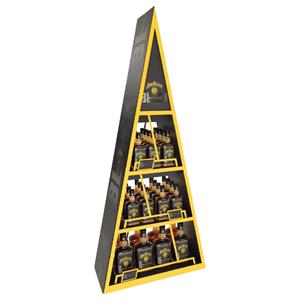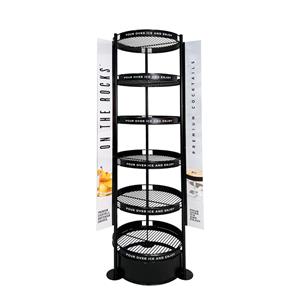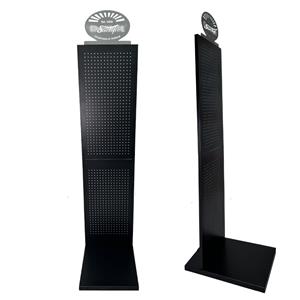Adapting Retail Displays to US Trade Shifts
Table of contents
1)Localization Trends Redefine Food Store Displays
2)Supply Chain Shifts and Grocery Shelving Innovation
3)Smart Grocery Displays Transform Retail Strategy
4)Retail Candy Displays Lead the Aesthetic Upgrade
5)Future Trends: Efficiency, Sustainability, and Design
6) Sintop Value
Against the backdrop of rising US trade protectionism, the retail landscape is undergoing a profound transformation. Supply chain uncertainty, rising import costs, and the return of local manufacturing are forcing retailers to rethink store layouts and display strategies. At this time, the demand for innovation and customization in food store displays, grocery store shelving, grocery store displays, and retail candy displays is growing rapidly. Efficient, flexible, and sustainable display methods are becoming key directions for the next generation of retail stores to enhance their competitiveness.
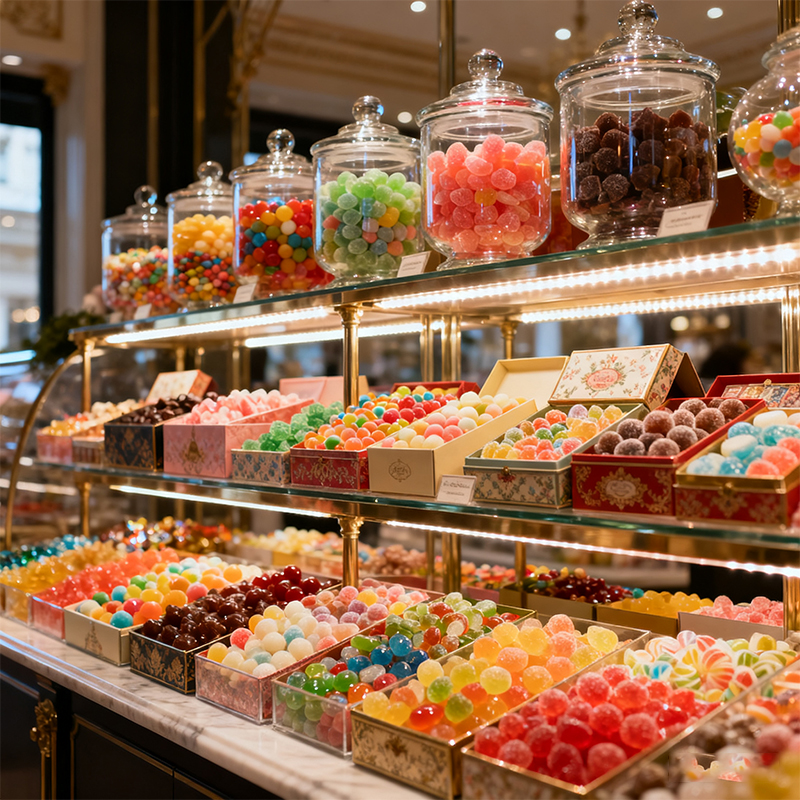
Localization Trends Drive Food Store Display Redesign
As tariff barriers gradually increase, retailers are increasingly inclined to collaborate with local manufacturers. Food store displays are no longer just shelves displaying food, but have become an interactive medium between brands and customers. Many US food chains have chosen to use modular food store display designs to quickly adjust layouts for holiday promotions and seasonal changes. This flexibility not only reduces operating costs but also increases sales conversion rates.
Locally produced food store displays better meet retailers' demands for environmentally friendly and sustainable materials. The combination of wooden structures and recyclable metals gives the displays a more sophisticated feel and aligns with American consumers' expectations for "green retail."
Supply Chain Changes Drive Innovation and Upgrading of Grocery Store Shelving
With import restrictions imposed by trade protectionism, the retail shelving supply chain is also changing. Grocery store shelving no longer relies on a single source but instead utilizes multi-channel sourcing and local manufacturing. Today's grocery store shelving emphasizes structural stability and display flexibility. Many supermarkets are choosing adjustable shelves, movable slides, and lightweight metal structures to meet the display needs of different product categories.
Retailers are also placing greater emphasis on extending the brand experience when updating grocery store shelving. For example, mid-sized American supermarket chains have introduced LED lighting and modular components to make grocery store shelving not only practical but also more attractive to customers, increasing dwell time.
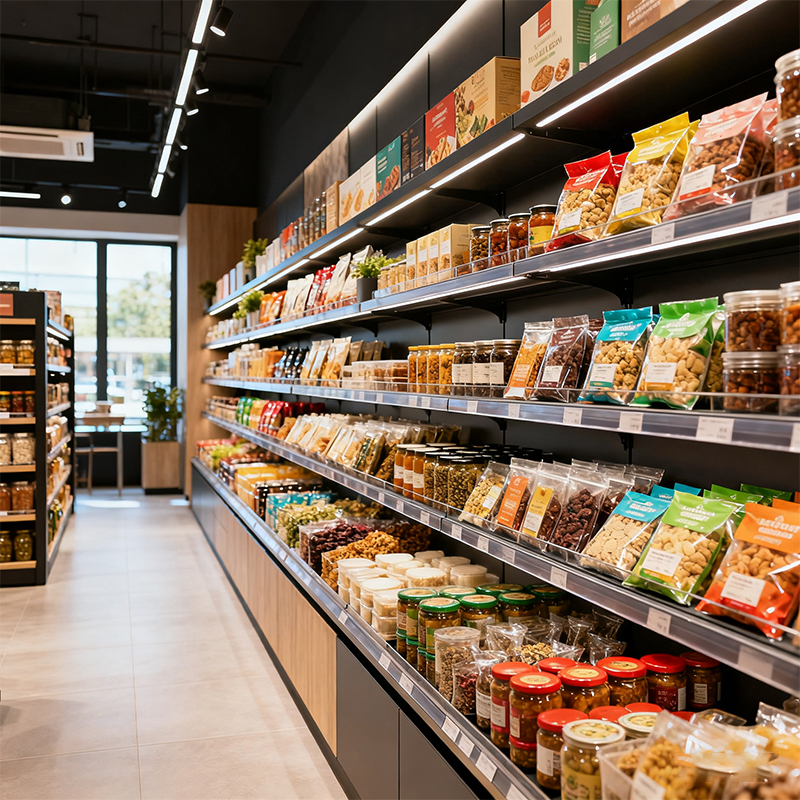
Intelligent Grocery Store Displays Become a Key Focus of Retail Upgrades
The introduction of digital technology has transformed grocery store displays from static displays to dynamic, interactive ones. Many department stores and grocery stores have begun installing grocery store displays with electronic price tags and sensors to enable real-time inventory and promotional information updates. Consumers can scan QR codes with their mobile phones to view information such as origin and nutritional content, enhancing the shopping experience.
In a market environment characterized by both high inflation and consumer pressure, intelligent grocery store displays also help businesses accurately analyze customer behavior, thereby adjusting product display strategies. This data-driven retail model has become a new way to cope with rising costs caused by trade protectionism.
The Dessert Market Drives Aesthetic Upgrades in Retail Candy Displays
The candy, chocolate, and snack market remains strong in the United States, and visual merchandising has become key to attracting customers. The design of retail candy displays is gradually shifting from functionality to experiential elements. Retail stores are making retail candy displays more attractive through color schemes, lighting design, and the use of transparent materials.
Especially during the holiday season, flexible retail candy display solutions allow businesses to quickly change display themes. For example, during Halloween and Christmas, themed candy displays often bring in over 20% additional sales growth. Therefore, retail candy displays are not only a sales medium but also an extension of brand emotion.
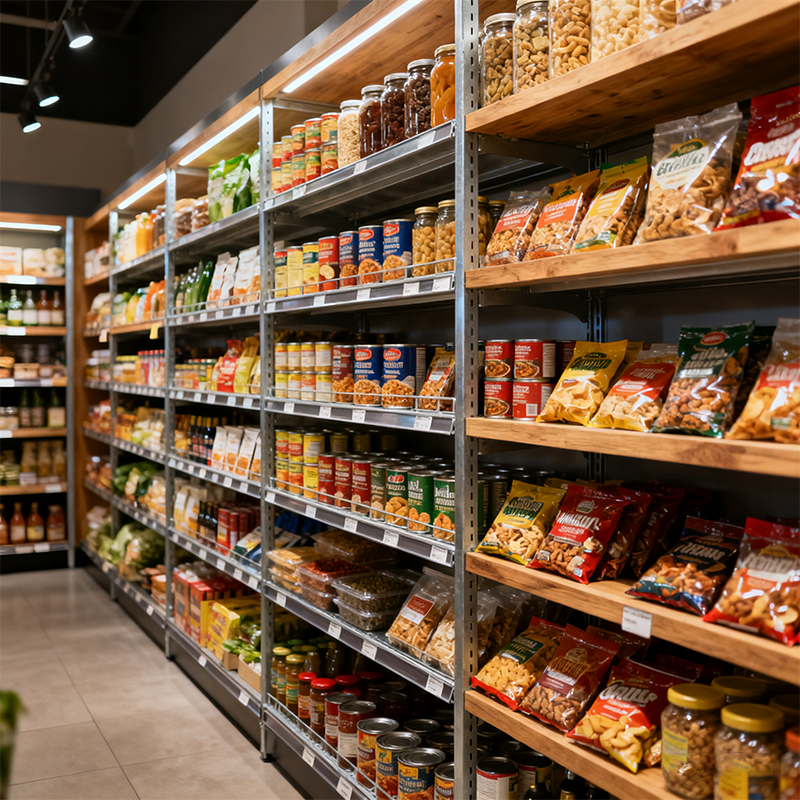
Future Trends: Integrating Efficiency, Aesthetics, and Sustainability
Looking to the future, the display trend in the US retail industry will move towards "efficiency + experience." Businesses will increasingly adopt reusable food store displays and adjustable grocery store shelving. At the same time, environmental protection concepts will permeate the design of every grocery store display, while customized retail candy displays will continue to lead new trends in retail aesthetics.
Regardless of changes in the trade environment, flexible display systems remain key to retail success. Brands that continuously innovate in the design of food store displays, grocery store shelving, grocery store displays, and retail candy displays will undoubtedly gain an advantage in the next round of market competition.
Frequently Asked Questions (FAQ)
Q1: Why are retailers now focusing more on locally manufactured display racks? A1: Due to increased import costs caused by US trade protection policies, locally manufactured food store displays and grocery store shelving can reduce transportation and tariff expenses while responding to sustainability trends.
Q2: How to optimize in-store displays within a limited budget?
A2: Modular grocery store displays or lightweight metal grocery store shelving can be chosen, offering flexible combinations that save space and enhance display effectiveness.
Q3: How should a retail candy section be designed?
A3: The key to a retail candy display is visual appeal. Through lighting, transparent boxes, and color schemes, the candy section can be more "sweetly tempting," encouraging impulse purchases.
Q4: Will smart display systems replace traditional shelves?
A4: No, they won't completely replace them. In the future, food store displays and grocery store displays will integrate digital management, but structural shelving will remain the core foundation of the display.
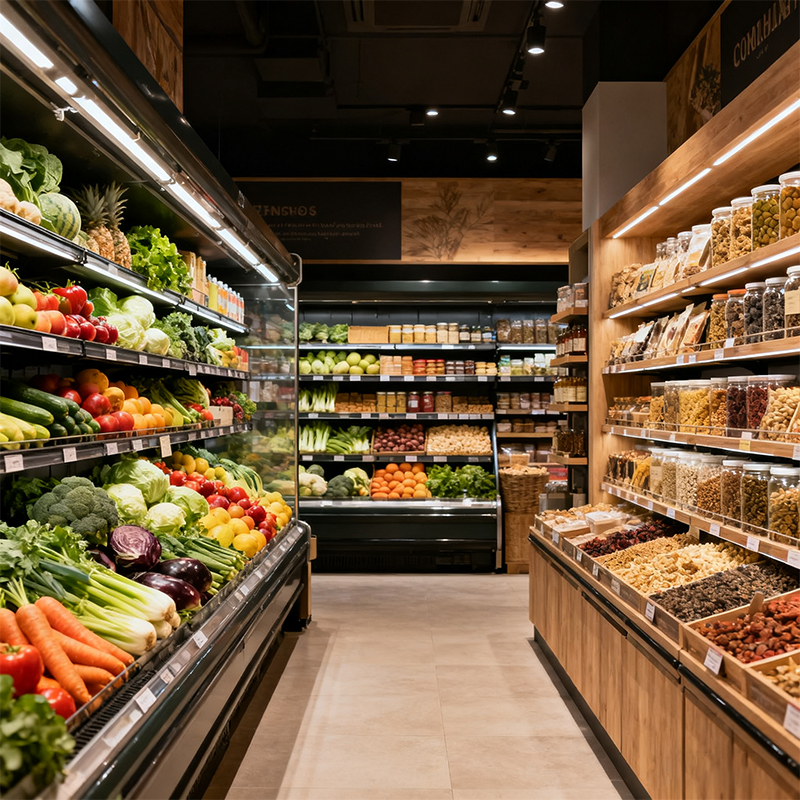
Sintop Value
At Sintop, we help retailers stay agile amid global trade changes. Our expertise in food store displays, grocery store shelving, and retail candy displays combines modular structure, sustainable materials, and refined craftsmanship. Whether optimizing local sourcing or enhancing in-store aesthetics, Sintop’s customizable display systems empower brands to adapt quickly, reduce costs, and elevate the shopping experience—even in times of market uncertainty.

Contact information
Website: www.sintopfixtures.com
Wechat/WhatsApp: +86 15980885084
Email: elly@xm-sintop.com
FAQ
1. What are store fixtures?
Store fixtures are essential equipment and furniture used in retail spaces to display, organize, and store merchandise. Examples include shelving units, racks, display cases, counters, and hooks.
2. Why are store fixtures important?
Store fixtures enhance the shopping experience by organizing products, improving accessibility, maximizing space, and creating appealing displays that attract customers and boost sales.
3. What types of store fixtures are commonly used?
Common types of store fixtures include:
Shelving Units(wall shelves, free-standing shelves, adjustable shelving)
Display Cases (glass cases, countertop cases)
Racks (clothing racks, display racks)
Counters (checkout counters, service counters)
Hooks and Pegboards
End Caps
Signage and Graphics
Mannequins
4. How do I choose the right store fixtures for my retail space?
Consider your merchandise type, store layout, and branding needs. Fixtures should be functional, complement your store's design, and fit within your budget. Evaluate your space to determine the best fixture types and configurations for optimal product presentation and customer flow.
5. Can store fixtures be customized?
Yes, many store fixtures can be customized to align with your store's branding and specific needs. Customization options include materials, colors, sizes, and designs. Collaborating with a fixture supplier or designer can help create fixtures that match your store’s style and functional requirements.
6. How can I maximize space with store fixtures?
Utilize fixtures that optimize vertical space, such as wall-mounted shelves and tall display racks. Modular and adjustable fixtures can adapt to changing merchandise or store layouts. Plan your store layout carefully to ensure efficient use of space and smooth customer flow.
7. How do I maintain store fixtures?
Regularly clean and inspect fixtures to ensure they remain in good condition. Check for wear and tear, and repair or replace damaged parts. Follow manufacturer guidelines for maintenance and cleaning to extend the lifespan of your fixtures.
8. Can store fixtures be used for different types of retail stores?
Yes, store fixtures can be adapted for various retail environments, including clothing stores, electronics shops, grocery stores, and more. The choice of fixtures depends on the specific needs and merchandise of the store.
9. How can store fixtures improve the customer experience?
Well-designed fixtures make products easy to find and browse, enhancing the overall shopping experience. Effective use of fixtures creates an organized, aesthetically pleasing environment that encourages customers to spend more time in the store.
10. Where can I purchase store fixtures?
Store fixtures can be purchased from specialized fixture suppliers, retail equipment stores, or custom fixture manufacturers. Online retailers and local suppliers also offer a wide range of options.

